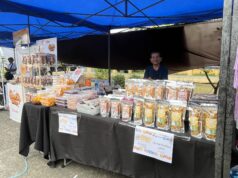CLARK FREEPORT – Groups expressed yesterday objections to the proposed Rice Tariffication Bill, as they insisted it would not lower rice prices and even lead to the “demise” of the country’s rice industry.
The National Federation of Peasant Women (Amihan) and the consumers’ group Bantay Bigas in a joint statement said that “contrary to government’s claims, rice tariffication will not automatically result to lower rice prices and will only lead to the demise of the local rice industry.”
“The country’s economic managers have repeatedly argued that implementing rice tariffication will stabilize rice prices. However, since the country’s accession to the World Trade Organization (WTO) during the period 1995 to 2015, the country had been importing an average of 1.3 million metric tons (MT) and yet, rice prices only increased over time,” the statement said.
Bantay Bigas spokesperson Cathy Estavillo noted that “imports then even exceeded that average, reaching 2 million MT of rice imports in 2008 and 2010, and yet rice prices did not go down.”
Estavillo stressed that the government’s argument favoring the tariff proposal “contradicts realities both in the local and world rice market as rice prices are controlled by rice cartels.”
The groups said that “world rice prices continue to increase because world rice prices are mostly driven by speculation where speculators monopolize rice price biddings which easily translates to higher rice prices in the world market.”
“As a net rice importer, it is impossible for the country to avoid the development in world rice market. The same arguments were used in pushing for the Oil Deregulation Law in 1998 but look at how the consumers became helpless victims of continuing oil price hikes,” Estavillo said.
Estavillo noted that “the people who are pushing for rice tariffication are also the same people who pushed for and are defending the TRAIN Law which is wreaking havoc on the lives of the poor and the marginalized Filipinos.” Meanwhile, Amihan cited studies showing that the lifting of rice quantitative restrictions on imports would lead to 29 percent drop in the income of rice farmers.”
“Local rice farmers could not compete with the flooding of subsidized rice imports in the domestic market with an expensive cost of production and backward agricultural technology which is further aggravated by lack of government support,” Amihan chairperson Zenaida Soriano said.
Soriano stressed that “high rice prices are due to the high cost of production is also misleading.”
“Farmers do not dictate the price of rice. Instead, the traders do, even at the expense of farmers,” she noted.
The Kilusang Magbubukid ng Pilipinas (KMP) noted that the average farmgate prices of palay as of July 2018 is P21.48 per kilo.
“The average rice prices should be 70 percent on top of the palay farmgate price. Thus, the actual retail price of rice in the markets should only be P36.52 per kilogram including post-harvest and transportations costs,” the KMP said.
Amihan and Bantay Bigas said that “economic managers are only using inflation to justify rice tariffication when it is actually the TRAIN Law and the continuous oil price hikes that contributed to the increase in the prices of basic commodities.”
The groups said that “if the government intends to make affordable rice accessible to the masses, it should start with the free distribution of lands to the farmers and provide appropriate support services and subsidies to reduce the cost of production and strengthen local production.”
They also urged the government to “prosecute and eliminate rice cartels and smugglers to resolve the monopoly control on supply and distribution; implement price control and pull out from one-sided trade agreements detrimental to the agriculture sector.”




